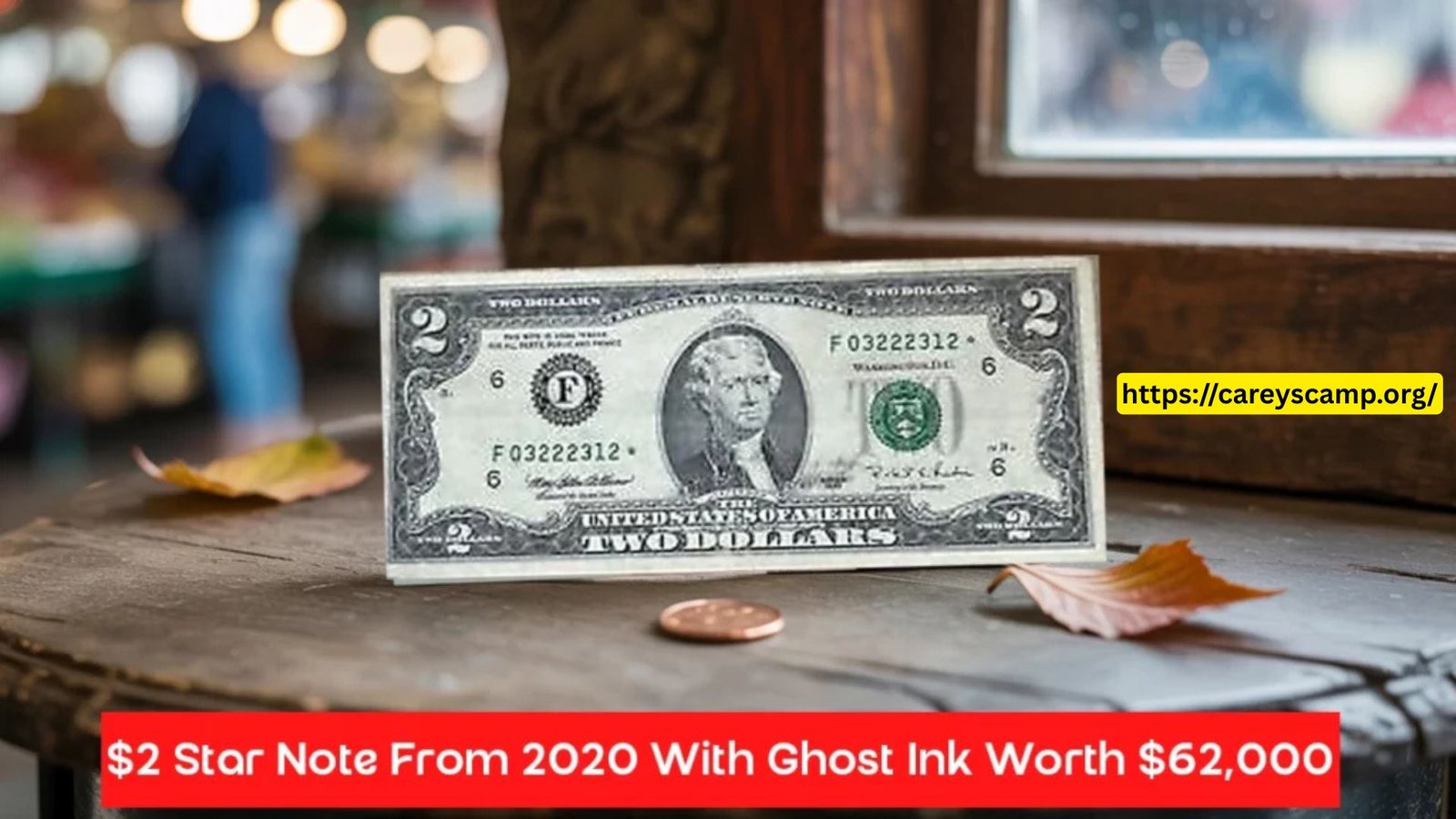In the world of currency collecting, the unassuming $2 bill often flies under the radar, dismissed as a quirky denomination. However, a 2020 $2 star note with a rare “ghost ink” error has recently captured the attention of collectors, fetching staggering prices at auctions.
This unique printing mistake transforms an ordinary bill into a coveted collectible, potentially worth thousands. Let’s dive into what makes this $2 star note so special, how to identify it, and why it’s a must-check for anyone with spare change.
What Is a $2 Star Note?
Understanding Star Notes
Star notes are replacement bills issued by the U.S. Bureau of Engraving and Printing when a regular bill is damaged or misprinted during production. Recognizable by a star symbol (*) at the end of the serial number, these notes are printed in smaller quantities, making them inherently rarer than standard bills. The 2020 $2 star note, in particular, has gained attention due to its limited print run and the added intrigue of printing errors.
The Allure of the 2020 Series
The 2020 $2 star note belongs to a denomination that’s already scarce in circulation. While $2 bills are still legal tender, they are printed in far smaller quantities than $1, $5, or $20 bills, adding to their mystique. The 2020 series, combined with the star designation, makes these bills a prime target for collectors seeking modern rarities.
The Ghost Ink Error Explained
What Is Ghost Ink?
The “ghost ink” error is a rare printing anomaly where a faint, shadowy duplicate of the bill’s design—such as Thomas Jefferson’s portrait or other elements—appears elsewhere on the note. This occurs due to ink transfer or a misfeed during the printing process, creating an eerie, ghost-like image. Unlike smudges or wear, ghost ink is a genuine error from the minting process, making it highly sought after.
Why It’s Valuable
Ghost ink errors are exceptionally rare, especially on star notes. The combination of a star note’s limited production and a visually striking error like ghost ink can drive values sky-high. For instance, a 2020 $2 star note with a clear ghost ink error recently sold at auction for over $20,000, with some estimates suggesting even higher potential depending on condition and clarity.
How to Identify a Valuable 2020 $2 Star Note with Ghost Ink
Step-by-Step Inspection Guide
To determine if your $2 bill is a valuable star note with a ghost ink error, follow these steps:
- Check for the Star Symbol: Look at the serial number on the front of the bill. A star (*) at the end indicates it’s a star note.
- Inspect for Ghost Ink: Hold the bill up to light or use a magnifying glass to spot faint, misplaced images of Jefferson’s portrait, the Treasury seal, or other design elements.
- Assess Condition: Collectors prize bills in crisp, uncirculated condition. Avoid folding or damaging the note.
- Verify the Year: Ensure the bill is from the 2020 series, as this specific combination is currently generating buzz.
Key Traits That Boost Value
| Feature | Description | Impact on Value |
|---|---|---|
| Star Symbol | A star (*) in the serial number marks it as a replacement note. | Significantly increases rarity. |
| Ghost Ink Error | Faint, shadow-like duplicates of design elements due to printing mishaps. | Can boost value by thousands. |
| Uncirculated Condition | No folds, tears, or wear; pristine condition. | Essential for top-tier auction prices. |
| 2020 Series | Limited print run and recent collector interest. | Heightens demand among modern collectors. |
Why Collectors Are Obsessed
Rarity and Demand
The 2020 $2 star note with ghost ink is a perfect storm of rarity and collector appeal. Star notes are already scarce, and printing errors like ghost ink are even rarer. The growing interest in modern currency errors has fueled demand, with collectors willing to pay premiums for bills that combine multiple desirable traits. Auction houses like Heritage Auctions have reported intense bidding wars for such notes, reflecting a broader trend of valuing “accidental masterpieces.”
Historical Context
While older notes, like the 1976 Bicentennial $2 bill, have long been collector favorites, the 2020 series represents a new frontier. The ghost ink error adds a layer of intrigue, turning a modern bill into a piece of numismatic history. Collectors see these notes as a bridge between everyday currency and rare artifacts, making them a hot commodity.
Tips for Protecting and Selling Your $2 Star Note
Preservation Techniques
If you suspect you have a 2020 $2 star note with a ghost ink error, take these steps to preserve its value:
- Store Properly: Keep the bill flat in a protective plastic currency holder to prevent damage.
- Avoid Handling: Minimize contact to maintain its uncirculated condition.
- Get It Graded: Professional grading services like PCGS or PMG can certify the bill’s authenticity and condition, boosting its market value.
Selling Options
To maximize your return, consider these avenues:
- Auction Houses: Platforms like Heritage Auctions specialize in rare currency and can attract serious collectors.
- Online Marketplaces: eBay offers a broad audience, but ensure the bill is graded for credibility.
- Numismatic Experts: Consult a certified numismatist for a professional appraisal before selling.
Conclusion
The 2020 $2 star note with a ghost ink error is a hidden gem in the world of currency collecting. Its combination of rarity, a striking printing error, and pristine condition can transform a humble $2 bill into a paycheck-sized treasure. Whether tucked away in a drawer or received as change, this bill is worth a second look.
By carefully inspecting for the star symbol and ghost ink, preserving its condition, and seeking professional evaluation, you could uncover a small fortune. So, next time you come across a $2 bill, don’t spend it—check it. You might just be holding a piece of numismatic history worth thousands.




1 thought on “Found at Farmer’s Market: $2 Star Note From 2020 With Ghost Ink Worth $62,000”